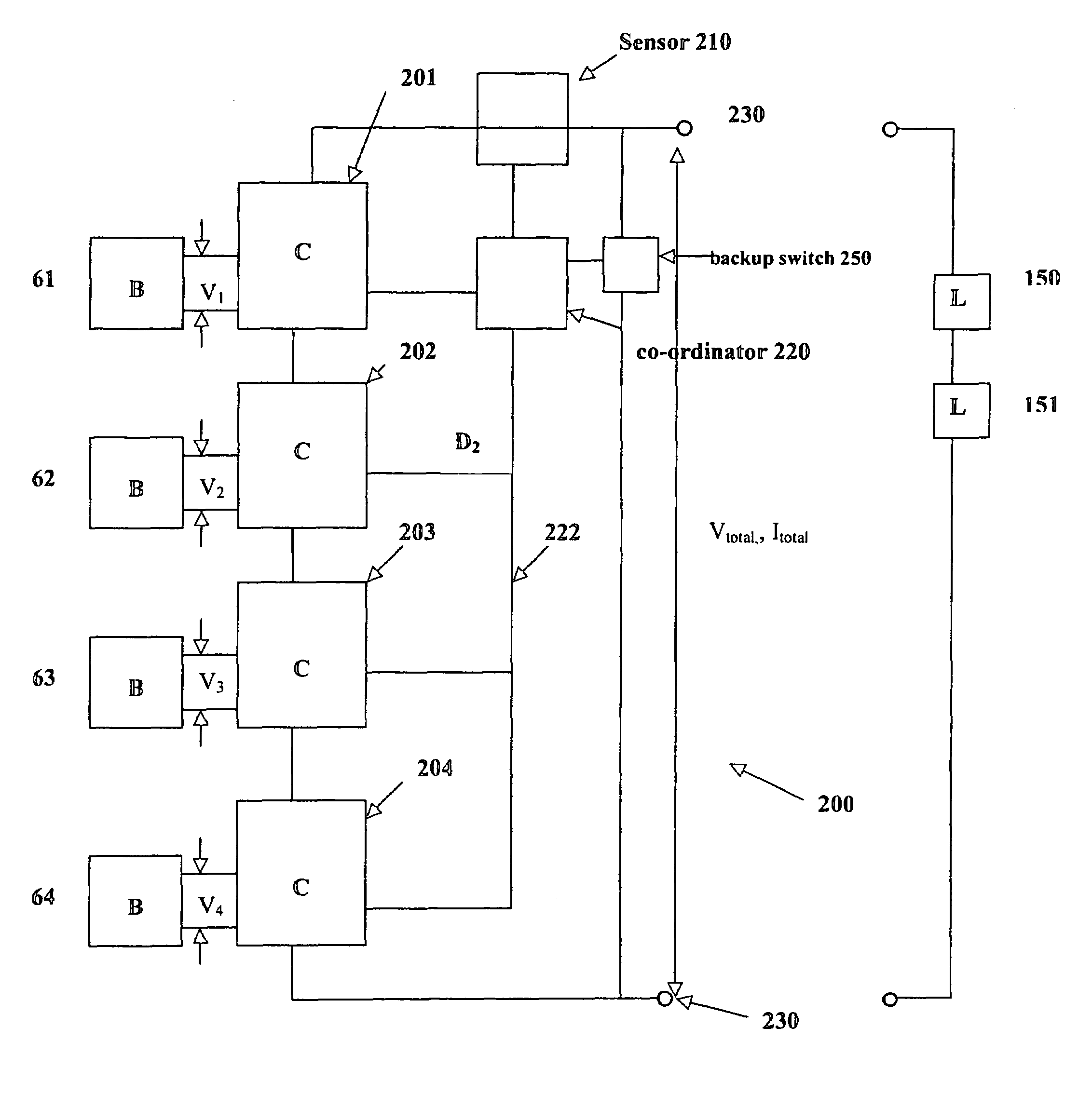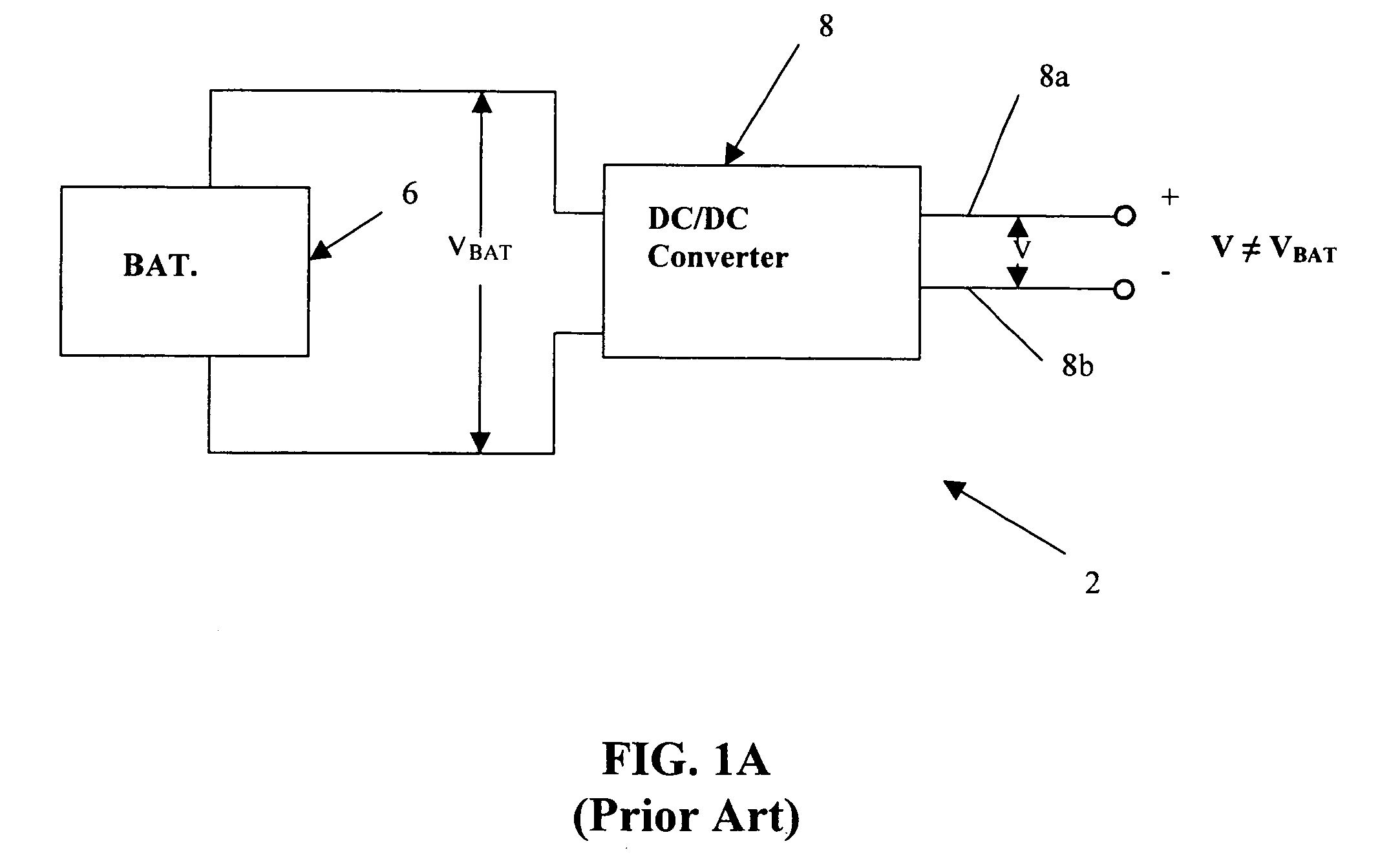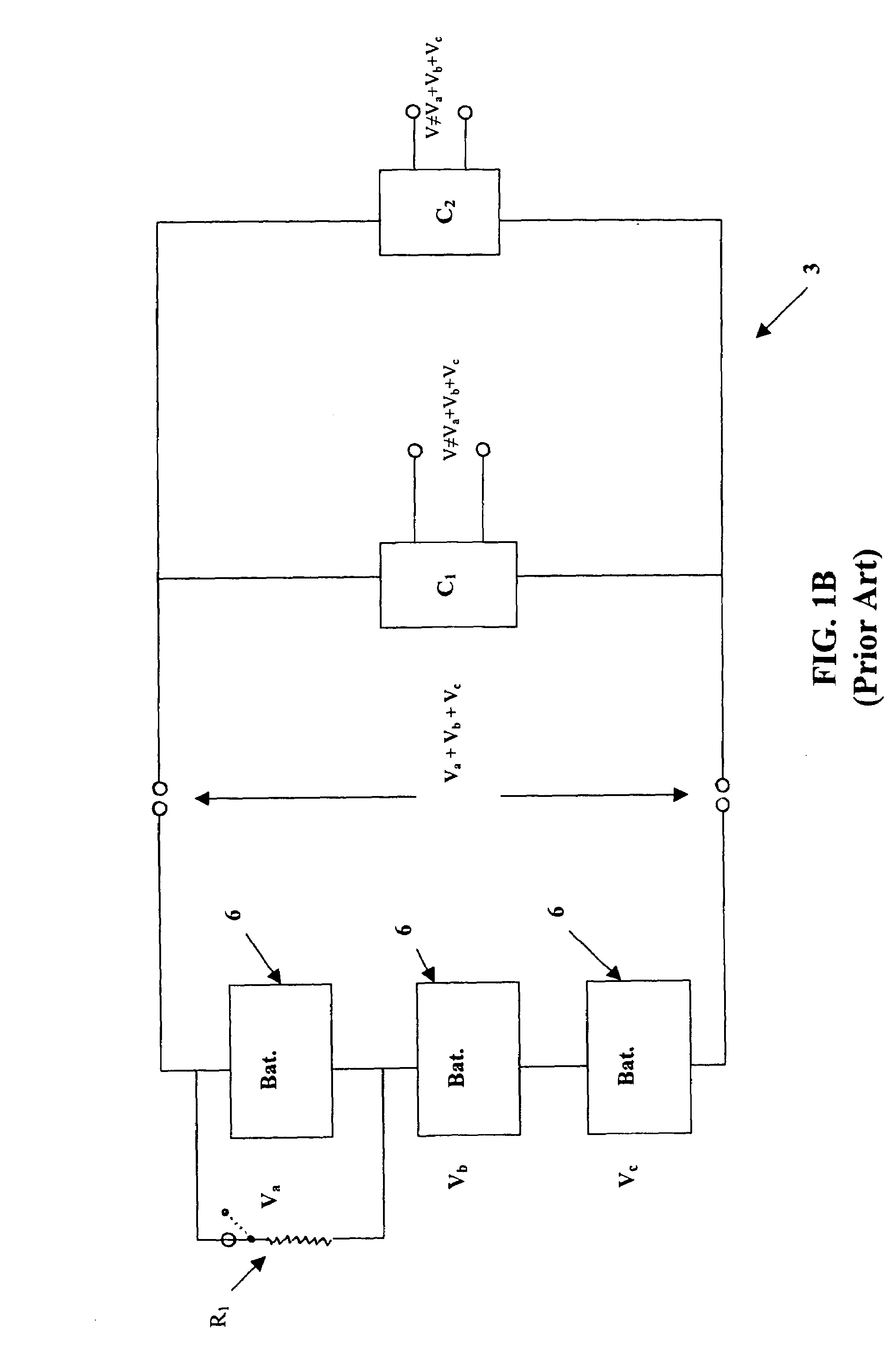Battery controller and method for controlling a battery
a battery controller and battery technology, applied in the direction of transportation and packaging, battery emergency power supply arrangements, etc., can solve the problems of inability to transfer, inability to implement, and difficulty in implementing bypass circuits, etc., to achieve more energy efficiency, less cost, and the effect of saving resources
- Summary
- Abstract
- Description
- Claims
- Application Information
AI Technical Summary
Benefits of technology
Problems solved by technology
Method used
Image
Examples
Embodiment Construction
[0036]Battery controller apparatus 200, an embodiment of the present invention, is shown in FIG. 2 and will now be discussed. Apparatus 200 is designed to charge, recharge and discharge several batteries B (individually identified by reference numerals 61 to 64). Apparatus 200 further includes several DC to DC converters, shown generally by the letter C (identified individually by reference numerals 201, 202, 203 and 204). As illustrated in FIG. 2, the DC to DC converters are connected to each other in series. Each DC to DC converter C is also respectively electrically connected to a battery B selected from the set of batteries. In preferred embodiment 200, the batteries B are not electrically connected (or necessarily connectable) to each other. In alternative embodiments, there may be various series and / or parallel connections among some or all of the batteries. A potential drawback of these alternative embodiments is that failure of one or more of the connected batteries will ten...
PUM
 Login to View More
Login to View More Abstract
Description
Claims
Application Information
 Login to View More
Login to View More - R&D
- Intellectual Property
- Life Sciences
- Materials
- Tech Scout
- Unparalleled Data Quality
- Higher Quality Content
- 60% Fewer Hallucinations
Browse by: Latest US Patents, China's latest patents, Technical Efficacy Thesaurus, Application Domain, Technology Topic, Popular Technical Reports.
© 2025 PatSnap. All rights reserved.Legal|Privacy policy|Modern Slavery Act Transparency Statement|Sitemap|About US| Contact US: help@patsnap.com



